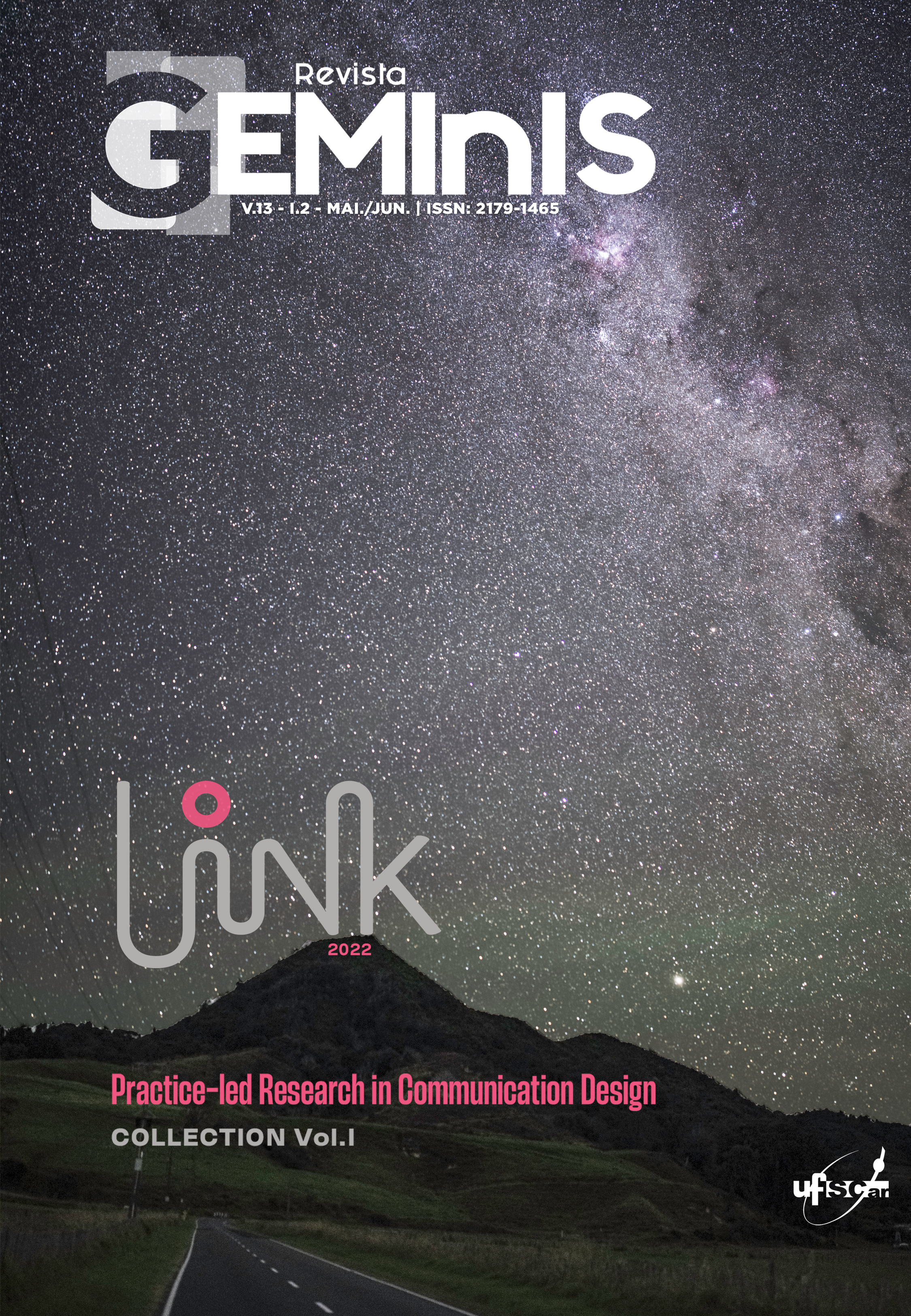Ngatu: a methodological framework for artistic practice
DOI:
https://doi.org/10.53450/2179-1465.RG.2022v13i2p17-28Palavras-chave:
Belonging, Faiva, Ngatu, Oceanic, Practice-led researchResumo
This article discusses an indigenous methodological framework employed in the development of my doctoral study, ‘Asi – The Presence of the Unseen. Considering the Tongan concept of ‘asi (the unseen spirit that energises and gives agency to artistic work), the thesis asked, “What occurs when young Oceanic people work together creatively in a group, drawing on values from their cultural heritage to develop meaningful faiva (artistic performance)?” In posing this question, the study sought to understand how ‘asi might bring forward a powerful sense of belonging and co-creation that might resource artistic practice. As such, I proposed that the ‘asi identifiable at the peak of a performance, might be also be discernible before and after such an event. The methodological framework for the study drew its inspiration from approaches to making Tongan bark cloth fabric (ngatu). Given the co-creative nature of such work, the Ngatu framework positioned the investigator as both an artistic practitioner and a reflector on the practices and experiences of other people collaborating in the study.
Downloads
Referências
Allardice, R. W. (1985). A Simplified Dictionary of Modern Samoan. [Pasifika Press]
Arendt, H. (1958). The Human Condition, 2nd ed. Chicago: University of Chicago Press.
Bolt, B. (2006). Materializing pedagogies. Retrieved April, 2022, from https://www.herts.ac.uk/__data/assets/pdf_file/0015/12381/WPIAAD_vol4_bolt.pdf
Bolt, B. (2016). Artistic Research as a Performative Paradigm. Parse Journal. Retrieved April, 2022, from http://parsejournal.com/article/artistic-research-a-performative-paradigm/
Cram, F. (2001). Rangahau Māori: tona tika, tona pono: the validity and integrity of Māori research. In M. Tolich (Ed.), Research Ethics in Aotearoa New Zealand: concepts, practice, critique (pp. 35-52). Auckland, NZ: Longman.
Gray , C. (1996). Inquiry through practice: Developing appropriate research strategies: No guru, no method. Retrieved April, 2022, from http://carolegray.net/Papers%20PDFs/ngnm.pdf
Ings, W. (2015). The authored voice: Emerging approaches to exegesis design in creative practice PhDs. Educational Philosophy & Theory, 47(12) 1277-1290. doi: 10.1080/00131857.2014.974017
Ings, W. (2018 March). Expanding thought. NiTRO, the publication of The Australian Council of Deans and Directors of Creative Arts (DDCA) (https://nitro.edu.au/)
Klein, J. (2010). What is artistic research? Gegenworte 23, Berlin-Brandenburgische Akademie der Wissenschaften. Retrieved April, 2022, from https://www.researchcatalogue.net/view/15292/15293
Leavy, P. (2015). Method meets art: arts-based research practice (2nd ed.). New York, NY: The Guilford Press.
Ling, L., & Ling, P. (2016). Methods and Paradigms in Education Research. IGI Global.
Manu'atu, L. (2002). Pedagogical possibilities for Tongan students in New Zealand secondary schooling: Tuli Ke Ma'u hono Ngaahi Malie. Unpublished EdD thesis. University of Auckland.
Manu’atu, L., Taione, M. I., Mabbs, N., Finau, V., & Fihaki, M. (2016). UikeKātoanga’i ’o e Lea faka-Tonga Tongan Language Week Education Resource 2016. Tongan Language Week Committee, Kautaha ’Api Fakakoloa, Vahefonua Tonga (Siaola) and Pasifika Education Centre. https://www.mpp.govt.nz/assets/Uploads/Tongan-Language-Week-resource.pdf
Moustakas, C. (1990). Heuristic research: Design, methodology, and applications. SAGE Publications.
New Zealand Tertiary Education Commission. (2018). Performance-based research fund (Paper No. 6). https://www.tec.govt.nz/assets/Consultation-documents-2019/PBRF-SRG-Consultation-Paper-6-Developing-evidence-portfolios-operational-guidance-research-output-component.pdf
Rolling, J. H. (2013). Arts-based research primer. New York, NY: Peter Lang.
Scrivener, S. (2002) The art object does not embody a form of knowledge. Working Papers in Art and Design 2. https://www.herts.ac.uk/__data/assets/pdf_file/0008/12311/WPIAAD_vol2_scrivener.pdf
Shumway, E. B. (1977). Ko e Fakalangilangi: The eulogistic function of the Tongan poet. Pacific Studies, 1(1), 25-34. Retrieved April, 2022, from: https://ojs.lib.byu.edu/spc/index.php/PacificStudies/article/view/8962/8611
Smith, L. T. (1999). Decolonizing methodologies: research and indigenous peoples. London, UK; New York, NY: Zed Books.
Tavares, T. & Ings, W. (2018). Navigating artistic inquiry in a creative-production thesis: the narrative and illustrative potentials of realismo maravilhoso. Journal of Art, Design and Technology [DAT], 3 (2), 9-42. https://ppgdesign.anhembi.br/datjournal/index.php/dat/article/view/85/73
Te Pou. (2010). Talking therapies for Pasifika peoples: Best and promising practice guide for mental health and addiction services. Te Pou o Te Whakaaro Nui. https://www.tepou.co.nz/uploads/files/resources/Talking-Therapies-for-Pasifika-Peoples-1.pdf
Toluta’u, T. K. (2015). Veitalatala: Mātanga ‘O e Talanoa [Unpublished doctoral thesis, Auckland University of Technology]. Tuwhera, http://aut.researchgateway.ac.nz/handle/10292/8671
Toro-Pérez, G. (2009). On the difference between artistic research and artistic practice. In C. Caduff, F. Siegenthaler, & T. W. lchli (Eds.), Art and artistic research (pp. 30-39). Zürcher Hochschule der Künste; Scheidegger & Spiess.
Tu’inukuafe, E. (1992). A simplified dictionary of modern Tongan. Pasifika Press.
Tuinukuafe, T., Fifita, T., Hamani, M., Samani, H., Tesimale, J., Kupu, O., & Afeaki-Mafile’o, E. (2012). Fofola e fala kae talanoa e kāinga: A Tongan conceptual framework for the prevention of and intervention in family violence in New Zealand – Fāmili lelei. New Zealand Government: Ministry of Social Development. http://www.pasefikaproud.co.nz/assets/Resources-for-download/PasefikaProudResource-Nga-Vaka-o-Kaiga-Tapu-Pacific-Framework-Tongan.pdf
Ventling, F.D. (2018). Illuminativa: The reasonance of the unseen [Unpublished doctoral dissertation]. Auckland University of Technology.
Vaioleti, T. M. (2006). Talanoa research methodology: A developing position on Pacific research. Waikato Journal of Education, 12, 21 34. https://researchcommons.waikato.ac.nz/bitstream/handle/10289/6199/Vaioleti%20Talanoa.pdf
Wood, B. (1998). Heka he va’a mei popo: Sitting on a rotten branch of the breadfruit tree: Reading the poetry of Konai Lang Thaman. Women’s Studies Journal, 14, 7-30.
Downloads
Publicado
Como Citar
Edição
Seção
Licença
Copyright (c) 2022 Cecelia Faumuina; Marcos Mortensen Steagall

Este trabalho está licenciado sob uma licença Creative Commons Attribution-ShareAlike 4.0 International License.
Autores que publicam nesta revista concordam com os seguintes termos:
a. Autores mantém os direitos autorais e concedem à revista o direito de primeira publicação, com o trabalho simultaneamente licenciado sob a Licença Creative Commons Attribution que permite o compartilhamento do trabalho com reconhecimento da autoria e publicação inicial nesta revista.
b. Autores têm autorização para assumir contratos adicionais separadamente, para distribuição não-exclusiva da versão do trabalho publicada nesta revista (ex.: publicar em repositório institucional ou como capítulo de livro), com reconhecimento de autoria e publicação inicial nesta revista.


